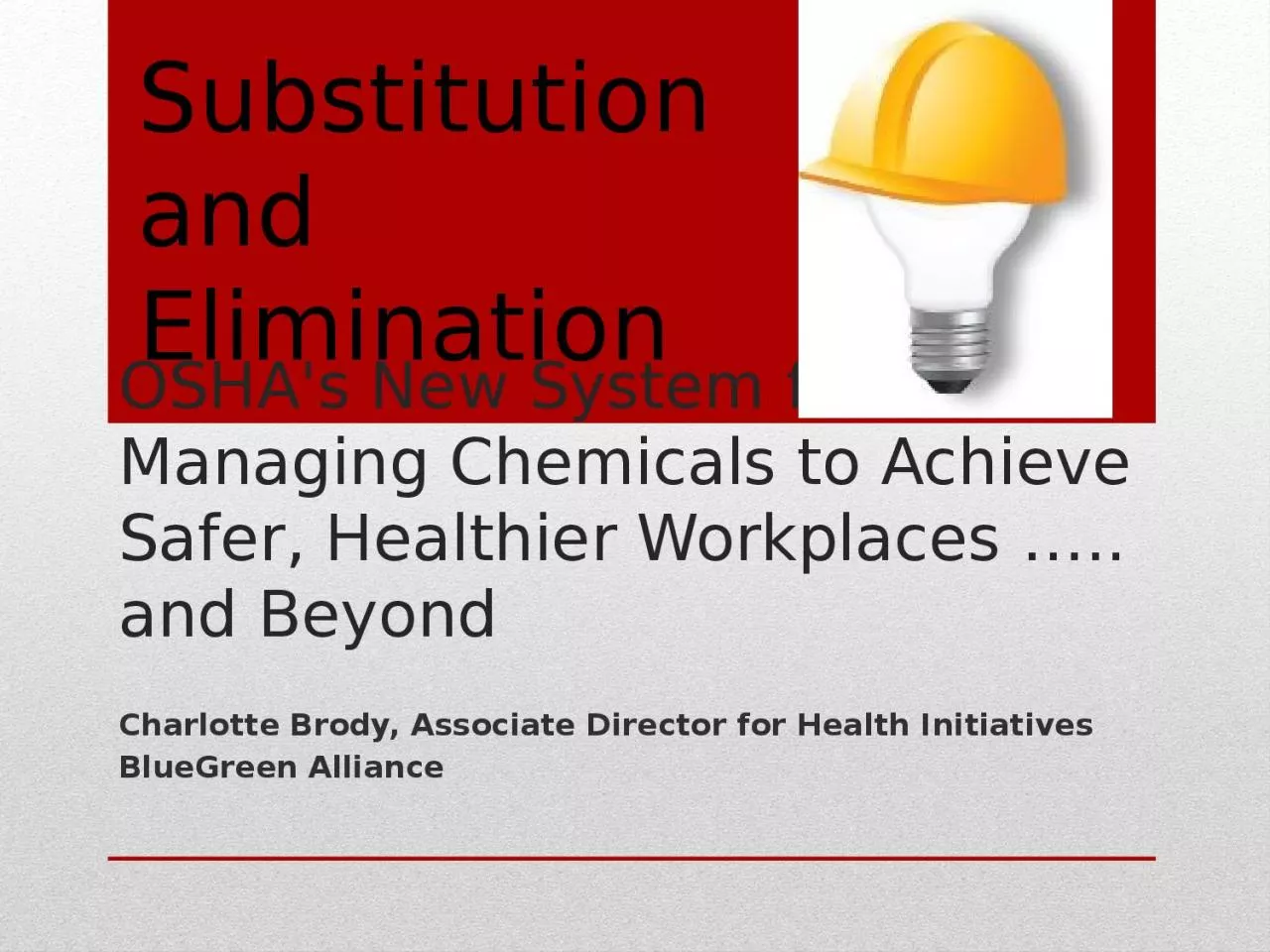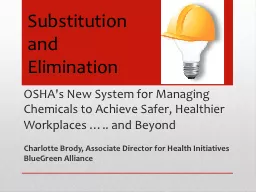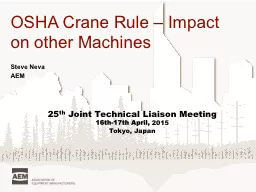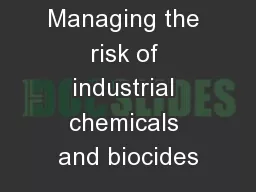PPT-OSHA's New System for Managing Chemicals to Achieve Safer, Healthier
Author : WiseWhale | Published Date : 2022-08-02
Workplaces and Beyond Charlotte Brody Associate Director for Health Initiatives BlueGreen Alliance Substitution and Elimination Why chemicals m atter Were getting
Presentation Embed Code
Download Presentation
Download Presentation The PPT/PDF document "OSHA's New System for Managing Chemical..." is the property of its rightful owner. Permission is granted to download and print the materials on this website for personal, non-commercial use only, and to display it on your personal computer provided you do not modify the materials and that you retain all copyright notices contained in the materials. By downloading content from our website, you accept the terms of this agreement.
OSHA's New System for Managing Chemicals to Achieve Safer, Healthier: Transcript
Download Rules Of Document
"OSHA's New System for Managing Chemicals to Achieve Safer, Healthier"The content belongs to its owner. You may download and print it for personal use, without modification, and keep all copyright notices. By downloading, you agree to these terms.
Related Documents














